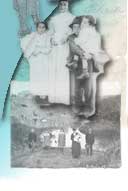
|
| Cultural Migration | Creating the Context Index |
 |

Creating the Context Home Research Focus Background Info Research Methods Data Submission Results of Study Data Analysis Conclusion Further Research Guided Research Research Question Background Info Research Methods Data Submission Results of Study Data Analysis Conclusion Further Research Research Values Student Research Doing Research Publish View Tools Discussions Map
|
Cultural Migration
From the First Americans on, the North American continent has been populated by immigrants.
The United States is proud of being a "nation of immigrants," and for many years,
scholars of immigration history have been busy documenting the experiences of U.S.
immigrants from all over the globe, from Puritans and Pilgrims to Irish to Japanese to Mexicans.
As a Nation, we have formed human communities from this rich diversity.
|
| © 1996-2006 PathFinder Science |